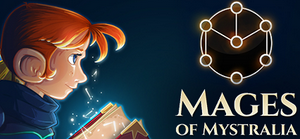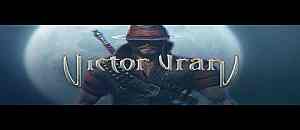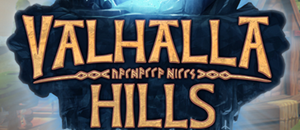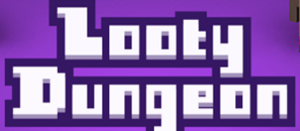-
-
-
Recently I wrote a blog post where I describe how to check localization of a game for free, with almost no effort. It was aimed at indie game developers. I reposted it at Reddit’s /r/gamedev and in the discussion that followed it occurred that a localization style guide is rather an unknown tool for indie game developers. And from my perspective it is one of the most informative and easy to create tools, that has amazing, positive impact on game localization quality.
Indie game developers are constantly reminded of “develop your game with localization in mind”. You must be fed up with this. Even I, as a translator and localizer, am bored with all the “do not use texts in images”, “translations to other languages tend to be shorter or longer”, “pay attention to placeholders” etc. All of this is VERY important, but you already know this. Yet, there are some less technical solutions that can be as important when “developing a game with localization in mind”. What I mean here is a style guide.
-
Today Kilgray (creators of memoQ CAT tool) published their Trend Report 2018.
I just finished reading it and below some of my quick comments and impressions.
- What I like the most about the report is that it is not memoQ-centric (and I thought it would be). Kilgray did a very good job to show the whole spectrum of CAT technologies and approaches.
- 7 diverse technological/translation-related aspects discussed by many professionals from and around Kilgray crew gives a lot of perspectives.
- I find all of the topics well researched, thought through and commented on.
- The walls of texts here are not a bug but a feature.
- Each section ends with a “What’s your take?” question and options to comment. As a reader I felt encouraged to interact, agree/disagree/give a thought. This is great.
- I did not have the feeling this report was published just for the sake of publishing something. I often have it when reading “5 best ways to…”, “Top 10 trends in…” meaningless posts published on software creators’ blogs.
- Well balanced level of technicalities.
- When I started reading this report I thought this is only for specialists. And this is true. Experienced language professionals will gain a lot of insight and surely will not agree with some points. However, at the end I was sure it is also a great source of current trends for less experiencd translators who are just starting their careers and want to know “what is happening now in the industry”.
- Some topics are indeed provocative and I like to disagree, such as Peter Reynolds’ “Post-editing RIP”. Based on my experiences I cannot disagree more, yet I see some interesting thoughts here that made me do some research. I do like to be provoked. On the other hand I would love some of the speculations to come true, such as Łukasz Rejter’s “…the race to add more and more features to the tools, thus increasing complexity, will stop.”
- My general opinion – every year, since I have started teaching students in 2010, I needed to spend several hours to come up with information about the current state of the affairs in CAT tools technologies. I had to collect links and prepare an introductory speech for my classes. Now Kilgray did this for me. And I must admit they did a very good job. Kudoz to all the team, as you created a really concrete analysis.
-
Recently I have been exchanging e-mails with Cassie Nantais from Borealys Games. We were wrapping up Polish localization of Mages of Mystralia.
When she wrote:
I think we were lucky because we didn’t have much complaint from the community for the translation except from some Chinese players. It was at that moment that we really realized that we don’t have the power and money to verify the quality of the translation of the company we hire. It’s good to know people in this field so you can hire freelancers you trust. But it’s hard to know someone for all the languages. We had the chance to know someone personally for the Japanese version of our game and to have you for the Polish version.
It struck me I have to expand this article (which was almost ready at that moment), as the need for quality localizations is ubiquitous and developers require some ways to control the translations they receive form their localization specialists. Yet the developers are restricted in this field mostly with time and money.
So is there a quick and inexpensive way you – a game developer – can check the localization quality of strings translated to foreign languages by your language professionals?
-
Money is the most burning aspect of localization.
-
This is the first part of at least 3-post series in which I will focus on costs of game localization.
-
Having received many questions concerning a simple method of calculating game localization cost I decided to create a small application just for that.
-
PlayStation 4 and Xbox One hardware part glossary in English, Polish, German, French, Spanish, Russian, Portugese, Italian, Slovak, Hungarian.
-
This post is an answer to game developers’ question “but what really and in detail happens with the strings when you get the file for localization?” I will add videos in which I show, how to prepare translation files and localize games in memoQ CAT tool.
-
1. Do not sort it A-Z, Z-A, by length or in any way other than logical.
-
Consistent use of terms in the game makes it more readible and playable and it also facilitates localization. Terminology is the skeleton for localization of your game.
Who is FreeIndieL10N?

MICHAŁ TOSZA
Game/IT software localizer
TRANSLATOR SINCE 2004
Game, software localization
+1,500,000 WORDS TRANSLATED IN:
Computer, console, tabletop games
+13,000,000 WORDS TRANSLATED FOR:
WB, Google, Microsoft, Apple & many others
+700 HOURS OF TRAININGS FOR:
Translators, teachers, lecturers, universities

TOMASZ KONTNY
Writer/editor/game producer
WRITER/EDITOR SINCE 2003
Games, comics, books, plays
+15 GAMES IN +6 YEARS:
Experience in game development (publisher)
+500 PAGES:
Of comicbooks printed
+1,000,000 WORDS:
Written, created, brought to life
RECENTLY LOCALIZED:











 Free Indie Games Localization
Free Indie Games Localization  How to qualify?
How to qualify?  Why do you need a game localization style guide?
Why do you need a game localization style guide?  Kilgray’s translation industry trend report in 10 thoughts I had when reading it
Kilgray’s translation industry trend report in 10 thoughts I had when reading it 
 How to check game localization quality for free?
How to check game localization quality for free?  Multilingual PS4 and Xbox One glossaries
Multilingual PS4 and Xbox One glossaries  Localization file in XLS/XLSX – 7 things to remember
Localization file in XLS/XLSX – 7 things to remember